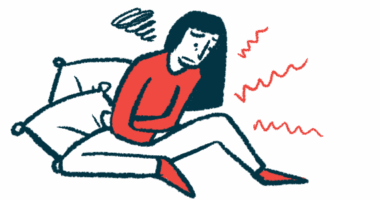New Cyclosporin A Formulation Provides Faster Relief of Chronic Dry Eye Symptoms, Trial Shows

Cyporin N, a new formulation of cyclosporin A, provides faster relief of chronic dry eye triggered by primary Sjögren’s syndrome than Restasis, results from a Phase 3 trial show.
The study, “Evaluation of the Efficacy and Safety of A Novel 0.05% Cyclosporin A Topical Nanoemulsion in Primary Sjögren’s Syndrome Dry Eye,” was published in the journal Ocular Immunology and Inflammation.
Ocular symptoms, including chronic dry eye — caused by infiltration of immune cells into the lacrimal glands and outer layer of the eye — are common in many people with Sjögren’s syndrome. Patients experience a persistent dry, scratchy feeling in the eyes that can lead to damage and a decline in quality of life.
Because excess inflammation seem to trigger eye symptoms in Sjögren’s patients, modulating the immune system seems a promising approach.
Cyclosporine A (CsA) is a powerful immunosuppressant that blocks the function of T-cells (the cells causing damage to the tear glands), and its application as eye drops has shown promise in treating inflammation at the eye’s surface.
However, because CsA has a poor solubility in water, topical formulations like Allergan‘s emulsion Restasis are unstable in the long-term, with the emulsion separating over time – like what happens if water and olive oil are mixed together.
To overcome this, Taejoon Pharm developed a new nanoemulsion formulation of CsA, called Cyporin N, designed to be stable for long periods and to enter the ocular surface better than the emulsion formulation.
Researchers tested their formulation versus Restasis to determine if Cyporin N would be better at improving moderate-to-severe dry eye symptoms in Sjögren’s patients.
The Phase 3 trial (NCT02461719) included 40 women with primary Sjögren’s syndrome, all of whom had symptoms of dry eye and dry mouth, without any other extraglandular problems.
Participants were randomly assigned Cyporin N or Restasis, both given twice a day in each eye, for a total of 12 weeks.
Researchers found that both CsA formulations had significantly reduced eye inflammation after 12 weeks, as measured by cornea and conjunctival staining scores. They both created a reduction in several markers of inflammation, including IL-6 and MMP-9.
However, Cyporin N appeared to cause an effect earlier than Restasis, with patients on Cyporin N experiencing significant reductions in inflammation after four weeks.
“Both Cyporin N and Restasis reduced ocular surface staining scores with similar degrees of subjective symptom change, but Cyporin N produced faster improvement than Restasis due to its enhanced bioavailability,” the researchers said.
Cyporin N also was associated with significant improvements in tear production and stability, as determined by the tear break up time (TBUT) test, at week 12. In contrast, no meaningful changes in the TBUT test were reported in the Restasis-treated group.
Either treatment showed an impact on the patients’ visual acuity, or vision clarity, throughout the 12 weeks of treatment.
In general, treatment with Cyporin N was found to be safe and well-tolerated. Incidence of ocular discomfort was similar in the two groups, and no serious adverse effects or reactions were reported.
These findings demonstrate “that the novel CsA nanoemulsion Cyporin N” can improve “ocular symptoms and signs after 12 weeks of treatment in primary Sjögren’s syndrome dry eye,” the investigators concluded.





